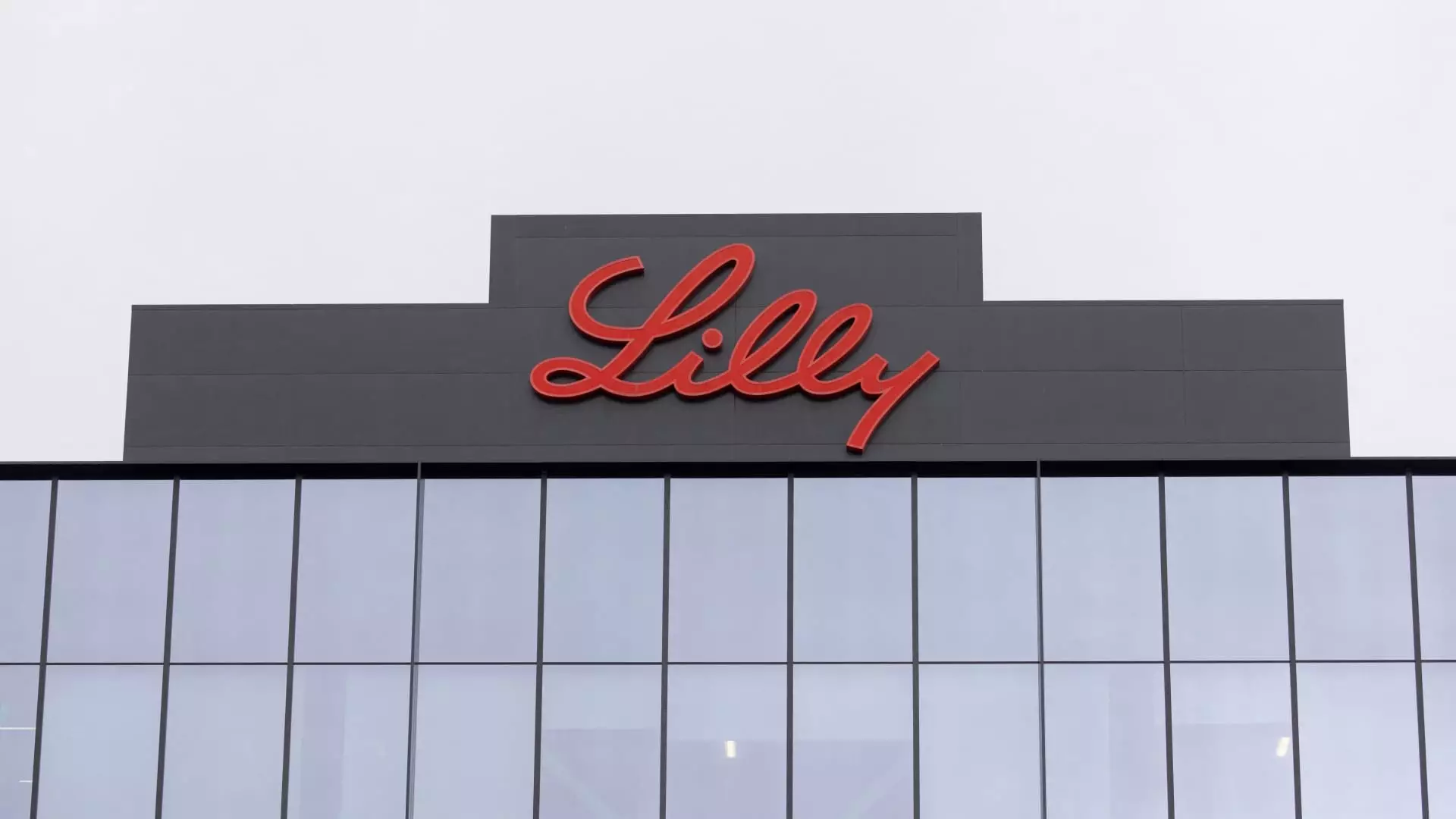In the complex world of commodities and stock markets, the dialogue surrounding pharmaceutical tariffs has positioned drugmakers in an ambiguous light. After Trump’s announcement of a temporary pause on tariffs affecting numerous countries—putting a lid on fears regarding the financial implications for pharmaceutical imports into the U.S.—we saw an uptick in shares for some drug manufacturers. Nevertheless, this fleeting optimism was undermined by the looming specter of drug-specific tariffs that promise to cast a long shadow over the industry. It is crucial here to dissect why this apparent relief may be merely an illusion and consider the far-reaching implications of an erratic tariff policy.
Trade-sensitive drug companies, such as Eli Lilly and Pfizer, initially faced declines of around 2% to 4%. By the end of the day, however, shares regained composure, indicating that the market remains volatile and reactive to Trump’s unsteady signaling. With share prices moving based on President Trump’s whims rather than actual economic fundamentals, it’s clear that a more stable approach is desperately needed.
Reshoring Reality: A Recipe for Complexity
While the administration’s goal of reversing decades of pharmaceutical manufacturing outsourcing is certainly well-intentioned, the execution appears riddled with obstacles. Production processes in the pharmaceutical industry are complex and layered; moving manufacturing back to the U.S. is not akin to simply relocating a few assembly lines. Market analysts have raised pertinent questions about the feasibility and economic viability of reshoring—concerns that seem to be brushed aside in favor of political theater.
As BMO Capital Markets analyst Evan Seigerman pointed out, the complexities of global supply chains make the vision of effortlessly relocating pharmaceutical manufacturing an unrealistic dream. Pharmaceutical firms are often interlinked with intricate networks that extend across various countries for different stages of production. The reality is that forcibly jacking up tariffs may cause more disruption than the administration realizes.
The Patient’s Plight: Unseen Consequences
The ripple effects of these tariff plans extend far beyond stock market fluctuations and corporate earnings; they carry with them the grave consequence of potentially jeopardizing the health and well-being of everyday Americans. House Democrats have voiced concern that these tariffs will introduce severe supply chain disruptions, leading to rationing in healthcare and increased mortality due to delayed treatments.
President Trump’s tariff crusade lacks a clear understanding of the pharmaceutical ecosystem. If drug manufacturers are forced to bear the costs of tariffs, they may have no option but to make harsh trade-offs, as Eli Lilly’s CEO, Dave Ricks, previously mentioned. With cuts to R&D or staffing often being a company’s first line of defense against rising operational costs, we must ask ourselves: who bears the brunt of these decisions? The answer is simple and tragic—the patients who depend on these medicines for their lives.
Political Folly: Blurring Economic Lines
Political motivations have historically clouded judgment when it comes to trade policy, but this current administration may be taking it to a new level of recklessness. Trump’s insistence on punishing foreign manufacturers in an effort to re-establish American dominance ignores the symbiotic relationship that exists between global trade and national interests. The perception that tariffs will bring jobs back to the U.S. plays well politically, but it sacrifices economic realism for short-term gain.
As the administration has declared a “major” tariff specifically on pharmaceuticals is forthcoming, the pharmaceutical sector seems caught in a tempest of uncertainty. With companies making significant investments in U.S. manufacturing, as seen with J&J’s commitment of $55 billion, the possibility of these investments turning sour under a chaotic trade regime raises deeper questions. To lead the charge for American jobs at the cost of patient well-being is a miscalculation that could cast a long shadow over public welfare for years to come.
The Future Looks Grim: A Call for Clarity
As we look towards the future amid this tumult, one thing is glaringly apparent: the current approach to tariffs on pharmaceuticals lacks a coherent vision. Whether it’s a gamble or an ideological crusade, it seems shortsighted and dangerously out of touch with the reality faced by everyday Americans. The travesty that unfolds at the nexus of policy and health care may create a nightmare for patients and healthcare providers alike.
In a world that thrives on the complex interdependencies of global trade, expecting isolated growth through tariffs pretends to ignore the lessons of history. With increasing fears of supply chain disruptions and rising medical costs for patients, it seems evident that America’s pharmaceutical future stands at a precarious crossroads; a nuanced, pragmatic approach to trade that prioritizes public health just might be the most urgent need of the hour. The stakes couldn’t be higher, yet the conversation seems perilously one-dimensional.

